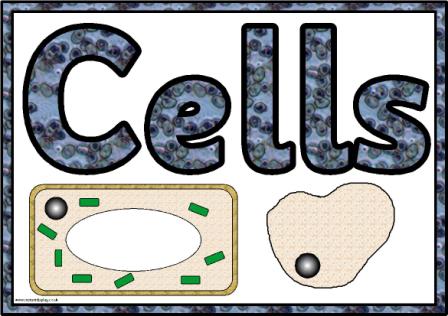
From cells to organs. Organisation in living things.
Watch this video about cell organisation and do the test… good work!
http://kent.skoool.co.uk/content/keystage3/biology/pc/learningsteps/OLTLC/launch.html
Eukariotic and prokariotic cells.
There are two main types or categories of cells: prokaryotic cells and eukaryotic cells. Both of these types of cells have several things in common. All cells are surrounded by a plasma membrane, which is made of a double layer (a bilayer) of phospholipids. Within this membrane, is the cytoplasm which is composed of the fluid and organelles of the cell.
Bacteria (Kingdom Monera) are prokaryotes. They do have DNA, but it is not organized into a true nucleus with a nuclear envelope around it. Also, they lack many other internal organelles such as mitochondria and chloroplasts
Organisms in the other four kingdoms are eukaryotes. Their DNA is organized into a true nucleus surrounded by a nuclear envelope which consists of two bilayer membranes. The nucleus of eukaryotic cells contains the genetic material which chemically directs all of the cell’s activities.
Cell structure. Animal and plant cells.
Branching off from and continuous with the outer membrane of the nuclear envelope is a double walled space which zigzags through the cytoplasm. This is theendoplasmic reticulum (ER for short). There are two kinds of ER: smooth ER and rough ER. Typically ER closer to the nucleus is rough and that farther away is smooth. Smooth ER is a transition area where chemicals like proteins the cell has manufactured are stored in the lumen for transportation elsewhere in the cell. Pieces of the smooth ER called vesicles pinch off from the smooth ER and travel other places in the cell to transfer their contents. Rough ER gets its name because it has other organelles called ribosomes attached, which give it a rough appearance when viewed by an electron microscope. Rough ER and its associated ribosomes are involved in protein synthesis.
Ribosomes are special organelles that are directly involved in protein synthesis. They are made of RNA (ribonucleic acid) and protein and are manufactured in the nucleus (from a DNA template), then go out into the cytoplasm to function. Vacuoles and vesicles are similar in that both are storage organelles. Generally, vacuoles are larger than vesicles. Plant cells generally have one large central vacuole that takes up most of the space within the cell and is used for storage of all sorts of molecules.
One of the places to which vesicles travel is the Golgi apparatus or Golgi bodies. These look like stacks of water-balloon-pancakes. They are sort of like the shipping and receiving department of the cell. Materials are received as vesicles unite with the Golgi apparatus, and sent elsewhere as other vesicles pinch off. Materials are temporarily stored in the Golgi bodies, and some further chemical reactions do take place there.
Mitochondria are found in nearly all eukaryotic cells, usually several or many per cell. They burn sugar for fuel in the process of cellular respiration: they’re the “engine” of the cell.
Plant cells normally contain another type of organelle that is not found in animals: chloroplasts. Chloroplasts convert light energy (from the sun) to chemical energy via the process of photosynthesis. The main pigment (green color) located in chloroplasts and involved in photosynthesis is chlorophyll.
Here you can learn about the main animal and cell structures.
http://kent.skoool.co.uk/content/keystage3/biology/pc/learningsteps/CAFLC/launch.html
Cell specialization.
Wondering how cells specialise? Enjoy this activity…
http://kent.skoool.co.uk/content/keystage3/biology/pc/learningsteps/SPALC/launch.html
Plant cell.
Focus on plant cells and the main differences between animal and plant cells.
http://kent.skoool.co.uk/content/keystage3/biology/pc/learningsteps/PCLLC/launch.html
[A+] To know something more…
Specialised cells in the breathing system.
http://kent.skoool.co.uk/content/keystage3/biology/pc/learningsteps/SCBLC/launch.html
Cell fertilisation.
http://kent.skoool.co.uk/content/keystage3/biology/pc/learningsteps/CEFLC/launch.html
Laboratory.
In this Unit we are observing some cells to the microscope. This video remembers how to use the microscope correctly.
http://kent.skoool.co.uk/content/keystage3/biology/pc/learningsteps/UAMLC/launch.html
How to prepare a slide of a plant cell.
http://kent.skoool.co.uk/content/keystage3/biology/pc/learningsteps/PSCLC/launch.html
How to prepare a slide of an animal cell.
http://kent.skoool.co.uk/content/keystage3/biology/pc/learningsteps/PSALC/launch.html


